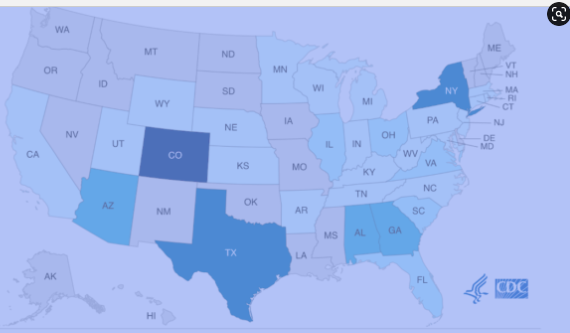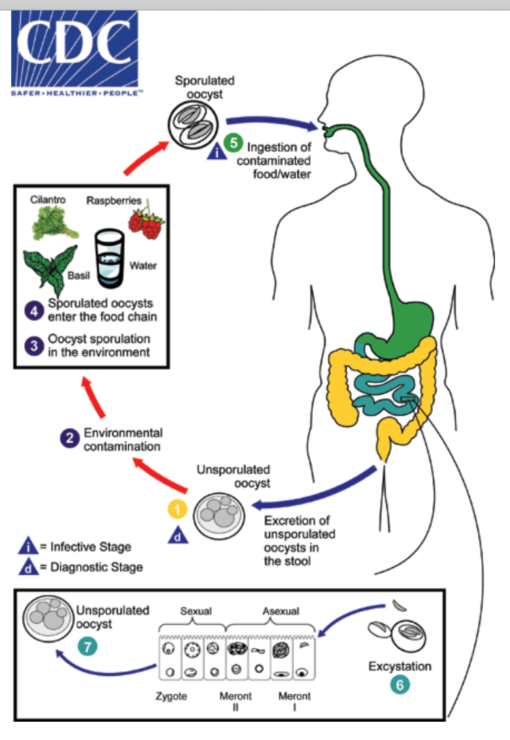Cyclospora Parasite Outbreak of Infections Increases

The number of patients in a large outbreak of infections from the cyclospora parasite has increased significantly, with the count approaching 600.
The Centers for Disease Control and Prevention has been tracking the cyclospora parasite outbreak since April 1. As of this week, there are 581 laboratory confirmed patients. The previous update from the agency on June 22 had 317 patients listed.
“No specific food items have been identified as the source of most of these illnesses. State and local public health officials are interviewing people with cyclosporiasis to find out what foods they ate before getting sick,” according to the CDC’s outbreak update.
The CDC has logged patients from 32 jurisdictions including 31 states and New York City.
Sick people range in age from 3 to 96 years, with a median age of 49 and 61 percent being female. The illness onset dates range from April 1 to July 2.
There are likely more patients because of the time it takes for the infection to develop and the time required for testing, confirmation testing and reporting. Specific tests are required to determine infections, which can mimic other illnesses. Symptoms can subside and then reappear.
Of 569 people with information available, 55 have been hospitalized. No deaths have been reported.
The total number of laboratory-confirmed cyclospora parasite cases reported since April 1 includes 20 cases in Georgia and Alabama linked to an outbreak associated with raw imported broccoli.
Although FDA and state and local partners conducted traceback investigations, there was not enough information to identify a specific type or producer of the broccoli.
The broccoli outbreak appears to be over, according to the CDC. There is no indication at this time that broccoli continues to be a source of illness for other cyclosporiasis cases being reported in the United States.
“Multiple outbreaks of cyclosporiasis caused by different foods can be reported during the same year. Previous U.S. outbreaks of cyclosporiasis have been linked to various types of fresh produce, including basil, cilantro, mesclun lettuce, raspberries, and snow peas,” according to the CDC.
During outbreaks, public health officials use questionnaires to interview sick people to determine what they ate in the 14-day period before getting sick.

About Cyclospora parasite: Anyone who has developed symptoms of Cyclospora infection, and has reason to believe they have been exposed to the parasite, should seek medical attention. Specific tests are required and antibiotics are used to fight the parasite.
Cyclospora infection can cause severe abdominal pain, watery diarrhea, nausea, vomiting, body aches, and fatigue. Symptoms can develop between two and 14 days after exposure. Though symptoms can be severe enough to send people to the hospital, it’s rare for people to die from Cyclospora infections.
Cyclospora parasite is a type of protozoa, which is a single-celled organism. It is transmitted when people somehow ingest microscopic amounts of contaminated feces, typically through contaminated food or water. It can be spread only through human waste, unlike E. coli and salmonella, which can also be spread from animal fecal matter.
Previous U.S. outbreaks of cyclosporiasis have been linked to various types of fresh produce, including basil, cilantro, mesclun lettuce, raspberries, and snow peas.
Food safety experts say there’s no evidence that washing the produce will remove the parasite.
Content source/credit: Food Safety News, “Patient count in Cyclospora parasite outbreak jumps by more than 200,” by Coral Beach, July 15, 2023.



